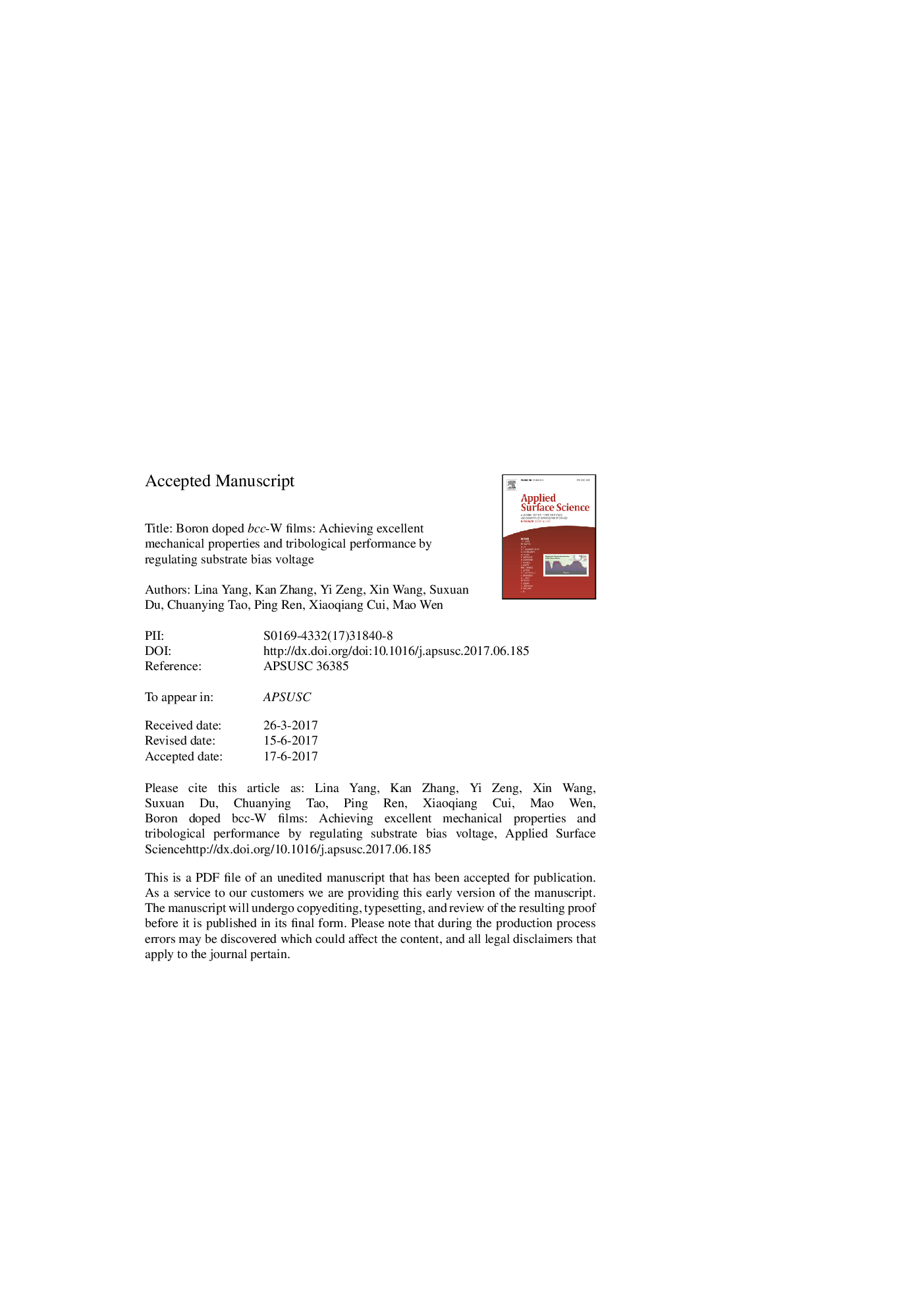| Article ID | Journal | Published Year | Pages | File Type |
|---|---|---|---|---|
| 5349917 | Applied Surface Science | 2017 | 24 Pages |
Abstract
Boron doped bcc-W (WBx, x = B/W) films were deposited on Si(100) substrates by magnetron co-sputtering pure W and B targets. Our results reveal that when the absolute value of substrate bias voltage (Vb) increases from floating to 240 V, the value of x monotonously decreases from 0.18 to 0.04, accompanied by a phase transition from a mixture of tetragonal γ-W2B and body-centered cubic α-W(B) phase (âVb â¤Â 60 V) to α-W(B) single phase (âVb > 60 V). Hardness, depending on Vb, increases first and then drops, where the maximum hardness of 30.8 GPa was obtained at âVb = 60 V and far higher than pure W and W2B theoretical value. In the mixed phase structure, the grain boundaries strengthening, Hall-Petch effect and solid-solution strengthening induced by B dominate the strengthening mechanism. Astonishingly, the film grown at âVb = 120 V still possesses twice higher hardness than pure W, wherein unexpectedly low (6.7 at.%) B concentration and only the single α-W(B) phase can be identified. In this case, both Hall-Petch effect and solid-solution strengthening work. Besides, low friction coefficient of â¼0.18 can be obtained for the films with α-W(B) phase, which is competitive to that of reported B-rich transition-metal borides, such as TiB2, CrB and CrB2.
Related Topics
Physical Sciences and Engineering
Chemistry
Physical and Theoretical Chemistry
Authors
Lina Yang, Kan Zhang, Yi Zeng, Xin Wang, Suxuan Du, Chuanying Tao, Ping Ren, Xiaoqiang Cui, Mao Wen,
